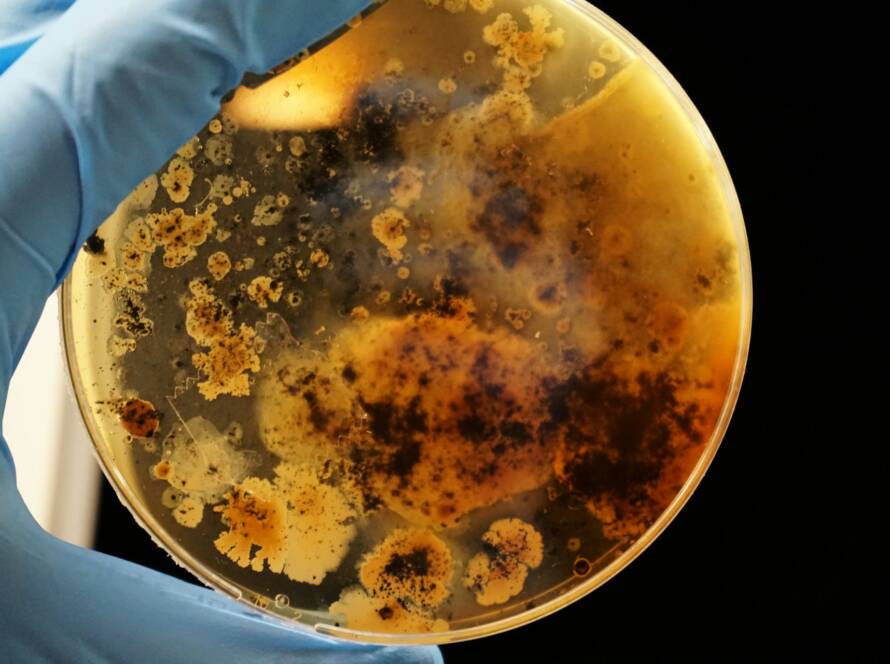You want to read this article from the beginning? Please click here for part 1.
Pressing and Shaping
After curds are cut, cooked, and stirred, they are transferred into moulds. These moulds are designed to shape the cheese and allow further whey expulsion. The shape and size of the mould vary depending on the cheese being produced. The process of transferring curds to moulds involves the following steps:
Draining the Curds is essential and separates whey from the curd. It is usually done with a cheesecloth but can be done with various other methods like directly ladling them into the final moulds, utilising draining bags or drip trays.
Moulding the Curds: After reaching the desired texture, they are transferred to moulds, baskets, or colanders to allow the whey to drain even more. The ideal humidity is between 75-85%. Transferring curds to moulds with too much or too little humidity can have several consequences.
If the curds are transferred to moulds with too much humidity, the cheese may retain too much moisture, leading to issues such as mould forming before the cheese has dried down to its final size. It can also result in a runny texture and insufficient cheese drying, causing problems during ageing.
On the other hand, if the curds are transferred to moulds with too little humidity, the cheese may become too dry and can cause the cheese to lose too much moisture during ageing, resulting in a very dry and brittle texture.
Pressing and Knitting the Curd: Once the curds are in the moulds, they may undergo pressing to expel even more whey and to give the cheese its final form. Additionally, the curds begin to fuse together into a consistent form, known as “knitting the curd”. Temperature is an essential factor. If the curd is too cold (below 35°C) when put into the mould, it can be difficult to achieve a good knit for the cheese as the curd firms up and won’t stick together properly.
Ripening
During this stage, biochemical reactions of ripening cultures transform the cheese’s basic components, enhancing its complexity and depth of flavours. Various ripening cultures, including bacteria, moulds, and yeasts, are used depending on the desired cheese variety. Bacteria, such as Lactobacillus, contribute to further acidification, while moulds, like Penicillium roqueforti in blue cheese, create distinct veins. Yeasts can also be involved, adding to the surface development of some cheeses. Factors influencing the ripening of cheese include;
Time: Longer ageing periods produce a more intense flavour and firmer texture as moisture reduces and proteins and fats break down further.
Temperature: Since all bacteria have their optimum at different temperatures, it is also an essential factor during cheese ripening. The ideal temperature generally falls within the range of 10°C to 14°C. Higher temperatures tend to increase the metabolism of bacteria, which speeds up the ripening and can lead to unwanted flavours. Lower temperatures do the opposite, and desired flavours might not develop fully.
Humidity: The ideal humidity level for cheese ripening generally falls within the range of 70% to 95% relative humidity but varies depending on the type of cheese. Higher moisture levels lead to faster ripening. If the humidity is too low, the cheese can dry out, while if it is too high, the cheese can develop undesirable textures and flavours.
Soft cheeses often ripen in high-humidity environments to develop their creaminess and mild flavours. Hard cheeses, on the other hand, need a dry environment to develop their characteristics. Maintaining the correct humidity is crucial to prevent poor mould, bacteria, or rind development regarding the cheese type made.pH: Cheese typically starts with a pH between 5.0 and 6.5; as it ages, the pH begins to drop due to the metabolites of lactic acid bacteria in the cheese. The lower the pH, the more salt it can take up and the saltier it gets. A low pH makes the cheese firmer and develops a sharper, more pronounced flavour.
Surface Treatments and Rind Development

The surface treatment involves deliberately inoculating specific microorganisms, such as Penicillium moulds on Brie or Camembert, which form a bloomy rind, or Brevibacterium linens on washed-rind cheeses like Gruyère. The development of the rind through these microorganisms plays a dual role. Flavor-wise, it imparts unique taste and aroma characteristics to the cheese, often adding depth and complexity. From a safety perspective, the rind acts as a protective barrier, hindering the growth of undesirable or harmful microorganisms. For more details, check the blog entry Titled Exploring the world of microorganisms in cheese.


